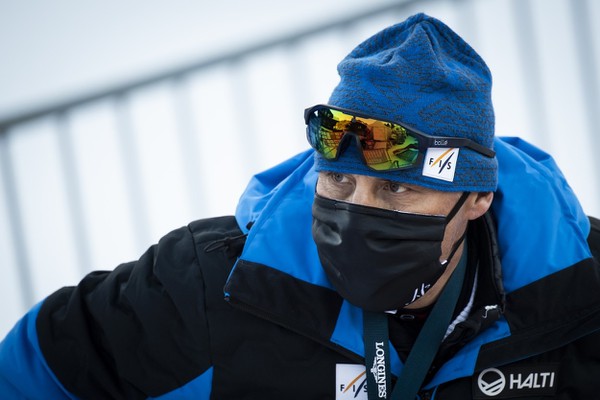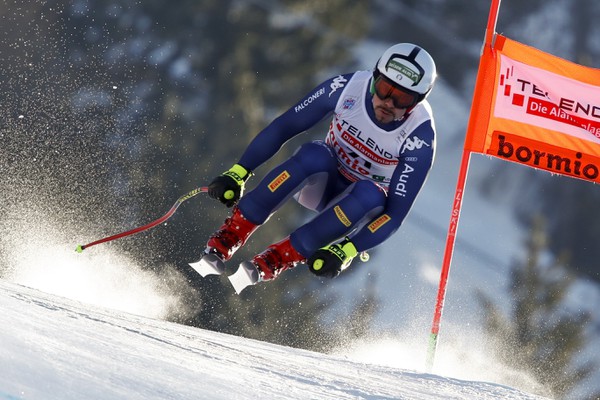OBERHOFEN – At the 2022 Winter Olympics in Beijing, skiers will probably fight for medals in combination for the last time. Once a royal discipline, it is not in the World Cup calendar for the second season in a row and due to its low attractiveness it is in danger of extinction.
“It’s a shame, of course, for me,” the AP quoted Austrian Marc Schwarz as the world champion in the discipline combining super G and slalom this year in Cortina d’Ampezzo. “The calendar is inflated without it, so I understand that from this point of view. But I enjoyed the combination and I would like to ride it in the future,” he added.
The fate of the combination and the development of other disciplines are to be dealt with by a special commission of the International Ski Federation (FIS), which was created by Johan Eliasch after his June election to the head of the FIS. The head of the commission is Peter Schrocksnadel, a long-time member of the FIS Council, who resigned as president of the Austrian Ski Association in the spring after 31 years.
The combination was once a showcase for downhill skiing. When alpine skiing first appeared in the Olympic program in Garmisch-Partenkirchen in 1936, the combination was the only competition. The effort to find the most versatile skier led to the popularization of the sport in the early years of the World Cup in the late 60’s and early 70’s.

Photo gallery (3) Markus Waldner. Source: Profimedia
“It was a great time. When you go back to the times of Karel Schranz and Jean-Claude Killy, they were the heroes of that time, they were the stars.” said the current FIS men’s race director Markus Waldner.
We need an attractive show
However, with the professionalization of alpine skiing since the 1980s, the combination began to marginalize. Companies began to develop specific equipment for each discipline, and the scissors between speed and technical disciplines became more and more fragmented.
“These two disciplines just don’t fit together at all anymore and that’s the problem,” said Waldner. “The bodies of speed specialists such as Beat Feuz, Dominik Paris or Matthias Mayer are trained for downhill and super-G. They must have strength. Slalom skiers have a completely different body constitution. It is also quite dangerous for a small slalom skier to go downhill.” he added.
And vice versa: speed specialists on slalom tracks suffer. “When you see a star skier in a slalom, even though he’s simple, he’s bothered, it just doesn’t look good. It’s ridiculous.” said Waldner. “And do we really want to show this to our fans? That Paris looks like a beginner? No. We need an attractive show, we need top performances.”

Photo gallery (3)
Source: TASR / AP Photo / Gabriele Facciotti
Ten years ago, there was room in the SP calendar for four combinations per season, but their number was still declining. FIS began experimenting with new formats more suitable for television, which would attract young audiences. Thus, the number of urban races under artificial lighting and parallel races to replace obsolete disciplines began to increase.
However, the combination has survived so far, although its format has changed several times over the years. Originally, the discipline was spread over two days and there was a classic downhill and two-wheeled slalom. Later, the descent was shortened or replaced by a super G and the slalom special was ridden for only one lap, all in one day.
It’s not a good product
The last change at this year’s championship was that the best riders from the super-G started the slalom first. However, this did not contribute to increasing the attractiveness, because the medalists were already known after the departure of several introductory competitors. The men’s and women’s combination, in which the American star Mikaela Shiffrin triumphed, had the worst viewership of all the medal fights in Cortina.
“Zero, zero. Nobody looked at it,” said Waldner categorically, according to which a change in the starting order could not bring about a positive change. “No, that’s not the problem. The problem is that it’s not a good product. There are only a few guys like Alexis Pinturault or Schwarz who can ride both disciplines at a high level. But there aren’t more than five such skiers, and that’s is a problem.”
According to Waldner, combination races have no place in the future of alpine skiing. And he expects Schröcksnadel’s working group to reach the same conclusion. “Let’s hope they give us the answer. And sooner rather than later,” said an Italian official who has been running the FIS men’s race since 2014.
- The author: © List
- Source: ČTK
https://wakelet.com/wake/omaGIMoeSut6lH3uE2wb1
https://wakelet.com/wake/UTGRbIFVtWutPDGGfsYfF
https://wakelet.com/wake/NiSuZTxXbritPUbMcGsq-
https://wakelet.com/wake/iAR0ucmYff_lvjpZmP3yG
https://wakelet.com/wake/G_t2LdYTFbfjzv6ij4Q-M
https://wakelet.com/wake/fO7yUCG_Hqc85yFaifpvA
https://wakelet.com/wake/Sg6_muUH2fwBn0shik53N
https://wakelet.com/wake/s0aDDnssxzHv7QL1MlZ-c
https://wakelet.com/wake/LqIDN8n3CDE4_T_EQuckU
https://wakelet.com/wake/OPjjydC0gBMyOQqkEUqbT
https://wakelet.com/wake/-YI7ff6_mGySYg7Oc-0Zx
https://wakelet.com/wake/oc4l59WdM9qa8OcFP2SN1
https://wakelet.com/wake/1LQpMmnSOdRxF0zYJjcmu
https://wakelet.com/wake/D_i_IwFnb7TZHNQX7TDTn
https://wakelet.com/wake/pv3EZNrvHwXtdvXGAcg_y
https://wakelet.com/wake/JsryAXzbguntQc0WTdRt0
https://wakelet.com/wake/sFiAY1yW21tWetctpDhWm
https://wakelet.com/wake/WTAOeYpL_l4WaT38WHZvj
https://wakelet.com/wake/CgXIGCqpts3sukNBreyOz
https://wakelet.com/wake/poY9fz6059U7XsfyscG7B
https://wakelet.com/wake/y8ncNewwKslo7AHZOqMpw
https://wakelet.com/wake/RzCWVscYrvpvp5B9kAygX
https://wakelet.com/wake/ZpTf_5IrtfXkeKfPLAXW9
https://wakelet.com/wake/-21bDfIEvS2xaKOLDjuIV
https://wakelet.com/wake/hDBnn0pdXj9yvwMHi5Hap